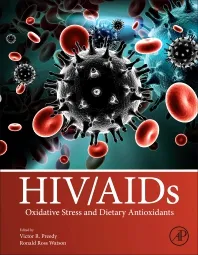
Overview
Acquired immunodeficiency syndrome (AIDS) is a chronic, potentially life-threatening condition caused by the human immunodeficiency virus (HIV). By damaging your immune system, HIV interferes with your body's ability to fight infection and disease.
HIV is a sexually transmitted infection (STI). It can also be spread by contact with infected blood or from mother to child during pregnancy, childbirth, or breastfeeding. Without medication, it may take years before HIV weakens your immune system to the point that you have AIDS.
There's no cure for HIV/AIDS, but medications can dramatically slow the progression of the disease. These drugs have reduced AIDS deaths in many developed nations.
Symptoms
The symptoms of HIV and AIDS vary, depending on the phase of infection.
Primary infection (Acute HIV)
Some people infected by HIV develop a flu-like illness within two to four weeks after the virus enters the body. This illness, known as primary (acute) HIV infection, may last for a few weeks. Possible signs and symptoms include:
Fever
Headache
Muscle aches and joint pain
Rash
Sore throat and painful mouth sores
Swollen lymph glands, mainly on the neck
Diarrhea
Weight loss
Cough
Night sweats
These symptoms can be so mild that you might not even notice them. However, the amount of virus in your bloodstream (viral load) is quite high at this time. As a result, the infection spreads more easily during primary infection than during the next stage.
Clinical latent infection (Chronic HIV)
In this stage of infection, HIV is still present in the body and in white blood cells. However, many people may not have any symptoms or infections during this time.
This stage can last for many years if you're not receiving antiretroviral therapy (ART). Some people develop more severe diseases much sooner.
Symptomatic HIV infection
As the virus continues to multiply and destroy your immune cells — the cells in your body that help fight off germs — you may develop mild infections or chronic signs and symptoms such as:
Fever
Fatigue
Swollen lymph nodes — often one of the first signs of HIV infection
Diarrhea
Weight loss
Oral yeast infection (thrush)
Shingles (herpes zoster)
Pneumonia
Progression to AIDS
Thanks to better antiviral treatments, most people with HIV in the U.S. today don't develop AIDS. Untreated, HIV typically turns into AIDS in about 8 to 10 years.
When AIDS occurs, your immune system has been severely damaged. You'll be more likely to develop opportunistic infections or opportunistic cancers — diseases that wouldn't usually cause illness in a person with a healthy immune system.
The signs and symptoms of some of these infections may include:
Sweats
Chills
Recurring fever
Chronic diarrhea
Swollen lymph glands
Persistent white spots or unusual lesions on your tongue or in your mouth
Persistent, unexplained fatigue
Weakness
Weight loss
Skin rashes or bumps
What is HIV/AIDS?